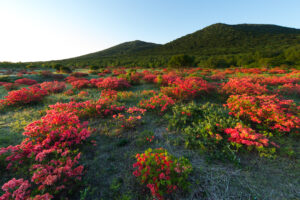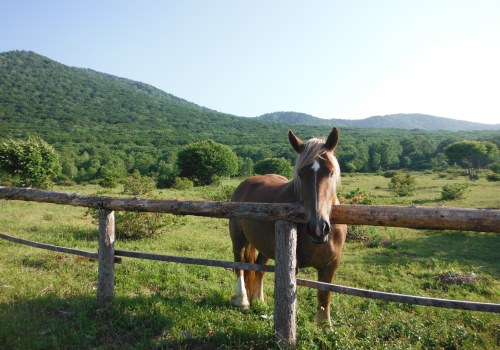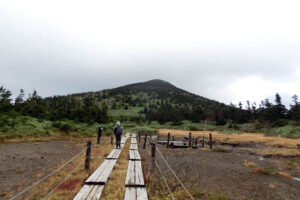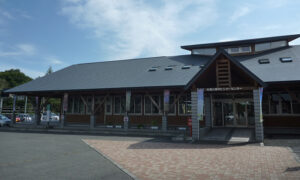Grasslands and Beech Forests of the Appi Kogen
Home " Why Hachimantai? Beauty and Adventure All Year Round in the Towada-Hachimantai National Park! " Hiking in the Towada-Hachimantai National Park " Grasslands and Beech Forests of the Appi Kogen
The Grassy Meadows and Woodlands

The beeches that thrive in the adjacent woodlands today are the offspring of trees harvested 80 years ago for use in charcoal manufacture and wood bases for lacquerware, the latter a local craft that continues today.
Not much gear or even previous experience is needed for a comfortable two- to three-hour walk past ponds and a waterfall. More serious hikers, take note: the Appi Kogen of Hachimantai are part of the famous 50-kilometer trail linking this area with Mt. Iwate.
This area in northern Iwate Prefecture was not originally a landscape as we know it today. More than 1,000 years ago, the hills of Appi were covered with deep forests. However, a volcanic eruption in 915 destroyed most of it by fire, and in the centuries of reconstruction that followed, the land was used for agriculture, and the grassy hills became pasture for working horses. during the Muromachi and Sengoku periods of the 15th and 16th centuries, the strong Kandachime horses bred here They played an active role on the battlefield.
Among the horses that can now be seen grazing in this bucolic setting are the descendants of steeds that witnessed historic samurai-era combat. Also here is the smaller Kiso horse, a native breed that is critically endangered.
After World War II cattle were introduced to the Appi highlands. Eventually, though, inexpensive imports slashed demand for locally grown beef, and engine-powered farm machinery replaced the workhorses. With livestock no longer grazing the hills, the plant life began to shift again. Scrub trees, broadleaf bamboo, and other woody plants began to take over the grassy meadows. Where there had been more than 80 hectares of open grassland in 1976, two decades later in 1997 the area was reduced by nearly half, to 44 hectares. Municipal authorities, together with the Forestry Agency, began to study sustainable ways of bringing the meadows back in 2006.
Today those efforts, backed by local businesses and volunteers, have reintroduced native horses to these meadows and established some 180 hectares of both wooded land and open meadows that are available for everyone to enjoy. One course for novice hikers begins at the Appi Unkai gondola station just beneath the summit of Mount Maemori (1,304 meters) and continues on to Mount Nishimori (1,328 meters) and onward to the Naka no Makiba meadow. A rich roster of nature programs for learning about local forest ecology, living in balance, and enjoying the great outdoors has been developed for visitors to the Hachimantai area, and school excursions are welcomed.




